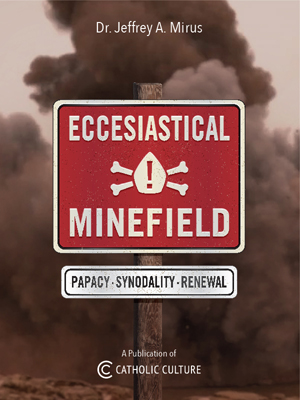A rare “win” in the Venerable League: Laity 4, Priests and Religious 3
By Dr. Jeff Mirus ( bio - articles - email ) | Jan 23, 2015
The latest announcements from the Congregation for the Causes of Saints are noteworthy because so many laymen are included. Priests and religious are more likely to be canonized, but the latest batch of venerables includes four lay persons out of seven total.
Free eBook:

|
| Free eBook: Ecclesiastical Minefield |
There are at least six good reasons why priests and religious are canonized out of proportion to their numbers. In no particular order:
- One assumes that those who commit themselves to the priesthood and consecrated life are, on average, somewhat more desirous of union with God than those who do not (I freely grant that this is not necessarily true.)
- Priests and religious usually have the benefit of a far more thorough Christian and vocational formation as compared with lay persons.
- They more frequently have organizations behind them to pursue their causes.
- Churchmen are very probably instinctively drawn to their own as outstanding advertisements for their mission.
- Even among lay persons, priests and religious are more likely to have both definable spiritual impact and to receive more prayers for help after their deaths.
- Finally, as the most distinctive and authoritative representatives of the Church, priests and religious are more frequently martyred—though mass martyrdoms tend to include many lay people.
Nonetheless, there is a deep sense in which we are now in the age of the laity. This phase of the Church’s history was probably not possible before the emergence of large democratic societies which are relatively classless. But whatever historical circumstances have assisted with this development, the Church today has far more to say about the importance of the laity, their call to holiness, and the great need the Church has for their witness in the social order.
So today one of the 22 new martyrs was an African layman who was killed by a mob just fifteen years ago for criticizing practices associated with witchcraft. More to the point, perhaps, are the declarations of “venerable” for a nineteenth-century French laywoman (though she was also a Franciscan tertiary); a nineteenth-century Spanish layman who promoted nocturnal Eucharistic Adoration; a twentieth-century Japanese laywoman and convert who ministered to street children; and a twentieth-century Bolivian laywoman active in catechesis and work with the poor.
There has been a greater effort to advance the causes of lay persons at least since Pope John Paul II. (One route to recognition of holiness, which blends the old and the new, has been to be a lay woman who raised multiple priests, though admittedly it has never been argued that this alone is sufficient!) But in looking over the relevant reports on the Congregation’s progress for the past two years, the previous “high” for lay people has been two. For whatever it is worth, in the latest round, five lay persons were named.
All comments are moderated. To lighten our editing burden, only current donors are allowed to Sound Off. If you are a current donor, log in to see the comment form; otherwise please support our work, and Sound Off!








